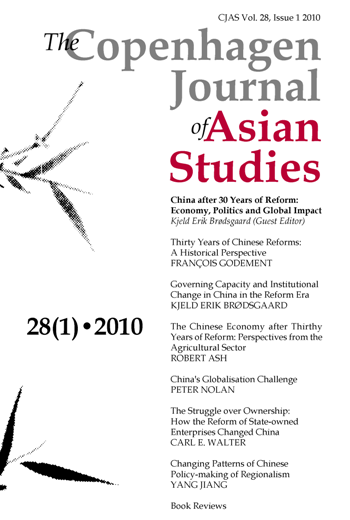The Chinese Economy after Thirty Years of Reform: Perspectives from the Agricultural Sector
DOI:
https://doi.org/10.22439/cjas.v28i1.2861Keywords:
Rural economy, agriculture, productivity, structural change, diversification, GM technologyAbstract
The contours of China's rural economy and society have changed dramatically during the last 30 years. Urbanization and migration have made China less of a rural society than it was in 1978, while agriculture is no longer the principal driver of rural, let alone national, economic growth. Nevertheless, the registered rural population still numbers well over 700 million, and the dominant role of agriculture as a source of employment persists to this day. In its efforts to promote sustainable economic and social development, the Chinese government faces some of its most pressing challenges in the countryside. Its ability to fulfil major goals – those relating to employment, food security, poverty reduction, welfare enhancement and environmental sustainability – therefore depends critically on the effectiveness of its rural policies. Rapid growth and marked changes in the structure of farm production since 1978 have been underpinned by major improvements in both land and labour productivity. In particular, the response of farmers to changes in levels and patterns of food consumption associated with growing affluence has been quite impressive. Despite short-term fluctuations, trend growth of domestic grain above all, cereal output has been positive, as a result of which China has succeeded in fulfilling its target of maintaining 'basic' food self-sufficiency. The government's adherence to a strategy of food self-sufficiency that runs counter to the principle of comparative advantage has also minimized China's involvement in international cereal markets. Meanwhile, property rights remain a core issue in the farm sector. From this perspective, a recent initiative, designed to facilitate the emergence of new kinds of land transfers that would pave the way for a process of land consolidation, appears to represent a significant new development – albeit one that carries dangers as well as opportunities.Downloads
Published
2010-12-10
Issue
Section
Articles


